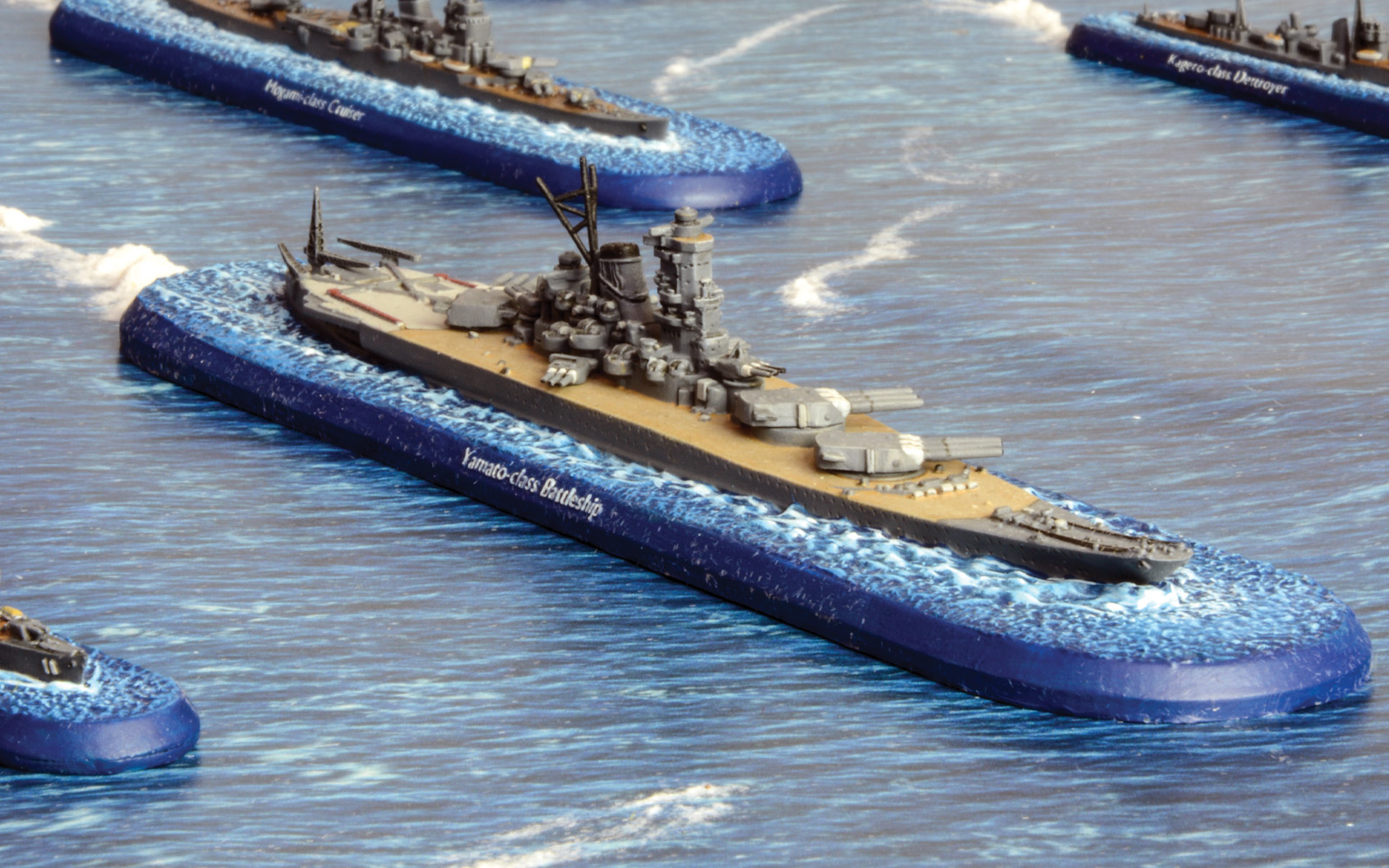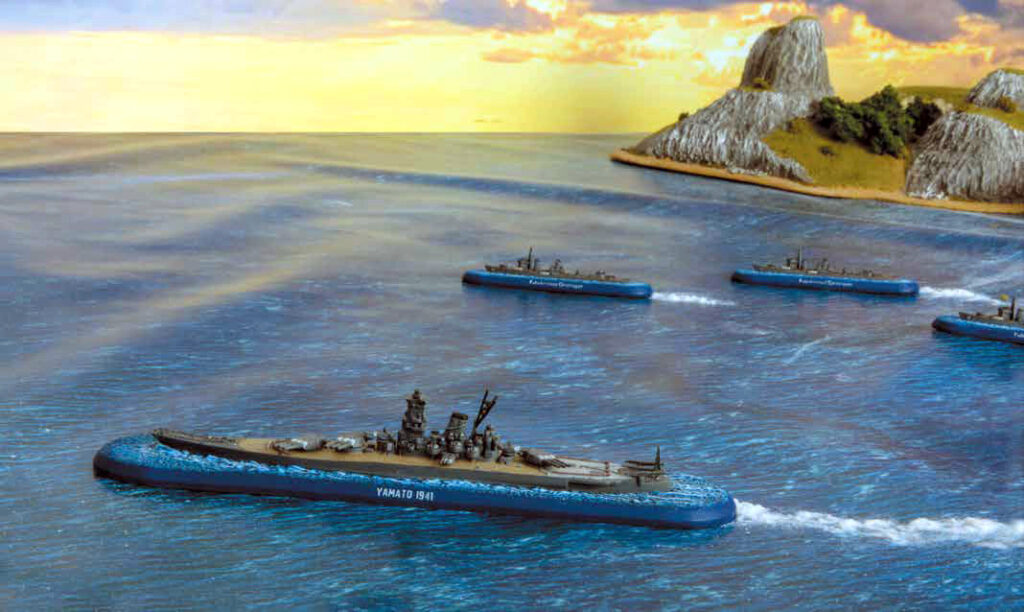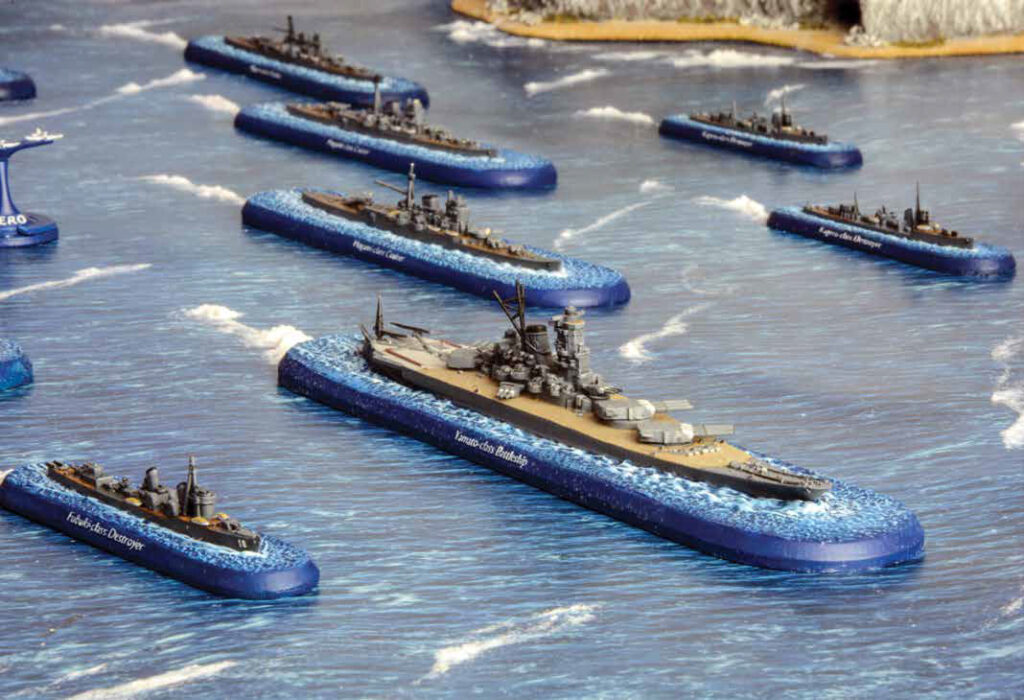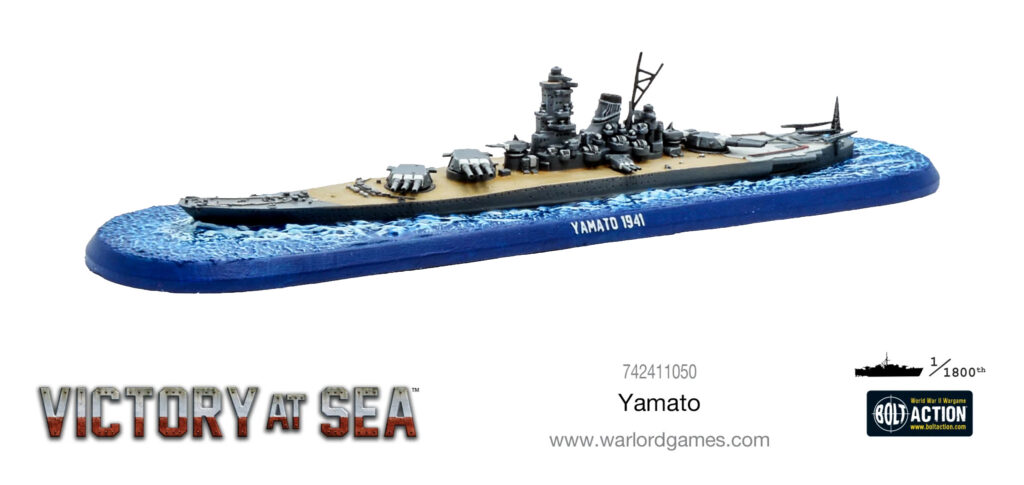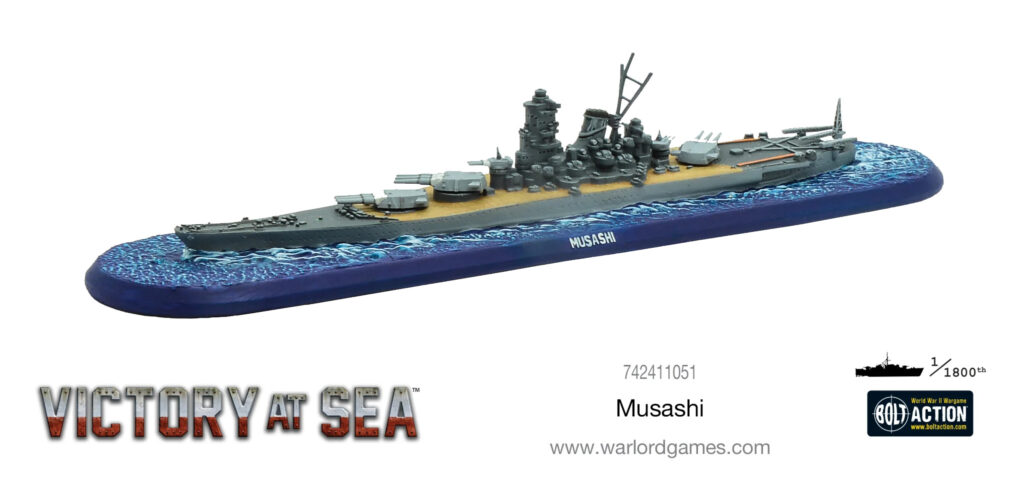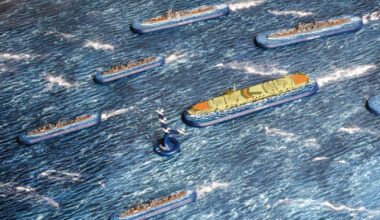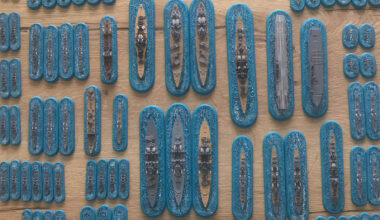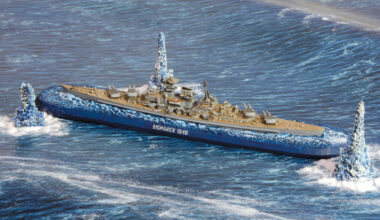In this edition of Forces of Fame, we shall be discussing the largest battleships ever put to sea. At over 70,000 tons of steel each, the Yamato-class of warships also carried a great weight of expectation that they would reign supreme in the Pacific; only rightly for such grand examples of naval engineering, but ultimately they proved ineffectual. This should certainly not deter Victory at Sea players, as they can prove a potent tabletop presence.
Designed for the Imperial Japanese Navy, the Yamato-class were the pinnacle of the battleship concept, and are in the exclusive unofficial category of ‘super battleships’. In the late 1920s, the IJN had determined that the route to naval supremacy in the Pacific would be the battleship rather than the aircraft carrier and sought to cement their own rising ambition by creating a fleet that could rival the Royal Navy or the United States Navy.
The Yamato-Class is mostly remembered for her main armaments; nine 18.1” guns, capable of firing shells weighing an average of 3,000 lbs at a range of over twenty-four miles. Alongside armour piercing and high explosive rounds she was also able to fire the Type Three Sanshikidan (common type) anti-aircraft shell, a round filled with high explosives and ball bearings. Alongside this formidable main battery, the class also carried a multitude of secondary and dual-purpose guns, as well as reconnaissance aircraft. The Yamato was also retrofitted with radar in 1944, as the original design had not called for nor included such a development. The class’s armour was 16” at its thickest point, with its deck armour being 7.9” inches thick at the strongest point. Internal armour was angled in such a way as to allow the ship to engage multiple enemy battleships simultaneously from a variety of angles, without presenting a particularly weak segment to the enemy.
The lead ship of the class, Yamato, was laid down in 1937, with her sister the Musashi laid down in 1938. Constructed in absolute secrecy, she was launched in August 1940, a year before the planned attack on the United States and with much concern to all Allied forces. However, despite (for the time) being the largest warship ever produced, her combat record is poor, to say the least; her guns were fired on but a few occasions, with only one instance of them being fired at a surface target. Her sister ship, the Musashi, similarly did not see much in the way of combat. Ultimately the class, despite its impressive statistics, was both an outdated concept and a logistical nightmare for the IJN. The latter problem is obvious in retrospect as the quantity of both fuel and manpower needed to simply move the ship from one port to another was a colossal strain on the already stretched Japanese supply lines.
However, the outdated nature of the very concept of battleships is far more crucial to understanding the fate of both the Yamato and the Musashi. The class was designed with the lessons of the First World War in mind, with its designers not paying attention to the subsequent advancements made in the fields of aircraft and radio technology. Even when construction started on the Yamato the supremacy of the aircraft carrier was already being demonstrated and by the time of her launch, had become apparent. The class lacked effective anti-air capability nor any sort of radar (at least initially), and both ships’ retrofits were too little and too late. This failure to understand and incorporate new trends of warfare into their designs would lead inevitably to the ultimate fates of both vessels of the class. Musashi was sunk at the Battle of Leyte Gulf and the Yamato during Operation Ten-Go, neither by surface vessels, but by aircraft.
On the Table
Let us not allow the events of history to detract from the Yamato-class’s inclusion on a tabletop battlefield. So, why must you absolutely include one (or both) of these monstrously large vessels in your Japanese Fleet in Victory at Sea? Well, when I say as part of the fleet, that may be a bit of an understatement. At an utterly glorious 1,000 points, a Yamato-class battleship will take up the vast majority of your fleet in an average game and for good reason. Both the Yamato and her sister, unrestrained by the real-world concept of logistics, are somewhat more effective in Victory at Sea than they were in the real world; with their armaments, lacking in the annals of history, very dangerous to your opponent’s miniature fleet.
As mentioned earlier, the 18.1” guns of the Yamato are her main strength. At a whopping 47”, they have the longest-range potential of any main battery guns in the game. With them you can potentially score hits on enemy vessels (especially big ones) very early on in a game; critical damage is a real possibility when combined with their Heavy trait. The class is also capable of launching scout aircraft to help guide and assist your brave gunnery crews in striking the enemy down. The Yamato herself can be upgraded to her 1944 refit, allowing the use of radar. When you put all of this together, it means your fleet can take the initiative in the first turn and perform an alpha strike that would make an Iajutsu (a combative quick-draw sword technique) master proud. Should the points limit of the game allow, this can be further enhanced with the addition of escort craft carrying Type 93 torpedoes. The Fan Salvoes special rule combined with the Yamato-class’s range could mean that the enemy fleet is crippled well before they are even in range of unleashing their own main armaments.
Although all this talk of beating the enemy before they have fired is all well and good, an aspiring admiral must remember that this early strike relies heavily upon chance. As such it is wise to analyse the Yamato-class’s other strengths and more importantly, its weaknesses. In addition to her main armament the class still has a number of other secondary guns of 6.1” calibre, which can pack a significant punch at closer ranges. In terms of survivability, the ships of the class boast significant armour with a rating of 7+ and an armoured deck, making it a hard nut to crack. And even if the enemy does end up putting a shell or torpedo through your shell (probably due to foul magics) the hull strength of the Yamato is a quite frankly staggering 146, so she can weather quite the storm of fire.
So, now that we have ascertained the strengths of the Emperor’s might we must, alas, examine the weaknesses that our cowardly enemies might exploit. The Yamato-class’s 5” light gun batteries are classed as Weak, reflecting the out-of-date designs used. If at all possible, you should use your main armament and secondaries to keep the enemy out of ‘knife-fighting’ range. The other thing you have to worry about is that Yamato and Musashi were built for fair fights, and not for dealing with pesky aircraft, with their anti-air batteries lacking to say the least. Dealing with both of these problems can be solved easily through the use of escort ships, if you’ve got the points!
Now you have been briefed on the grandest battleships of them all, go forth and bring divine vengeance upon those who would sail against you!
Other articles in the Forces of Fame Series:
Bolt Action – The Tiger I; Princess Elizabeth (Jubilee Special); Japanese Special Naval Landing Force; M18 Hellcat; Centurion Mk III; British Airborne; M4A3E8 Sherman ‘Easy Eight’; German Fallshirmjäger;
Blood Red Skies – Messerschmitt Bf 110; Ki-43 II ‘Oscar’; Grumman F9F Panther;
Victory at Sea – The Bismarck; Fletcher-Class Destroyers; Kongō;
Pike & Shotte (& Pike & Shotte Epic Battles) – Cuirassiers; Polish Winged Hussars; Dragoons;
Black Powder (& Black Powder Epic Battles) – The Iron Brigade; 95th Rifles;
Black Seas – HMS Victory;
Hail Caesar / SPQR – Dacian Falxmen; Hoplites;
